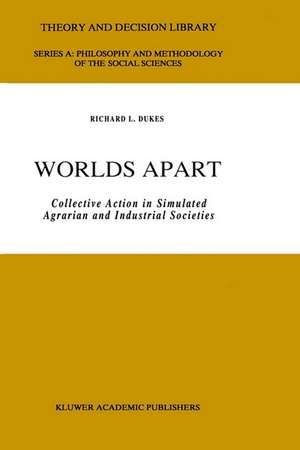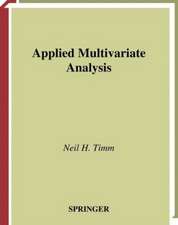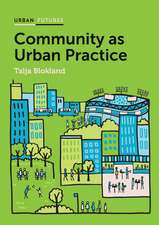Worlds Apart: Collective Action in Simulated Agrarian and Industrial Societies: Theory and Decision Library A:, cartea 14
Autor R.L. Dukesen Limba Engleză Hardback – 31 ian 1990
| Toate formatele și edițiile | Preț | Express |
|---|---|---|
| Paperback (1) | 636.12 lei 6-8 săpt. | |
| SPRINGER NETHERLANDS – oct 2011 | 636.12 lei 6-8 săpt. | |
| Hardback (1) | 643.34 lei 6-8 săpt. | |
| SPRINGER NETHERLANDS – 31 ian 1990 | 643.34 lei 6-8 săpt. |
Din seria Theory and Decision Library A:
- 18%
 Preț: 952.40 lei
Preț: 952.40 lei -
 Preț: 382.57 lei
Preț: 382.57 lei - 18%
 Preț: 958.25 lei
Preț: 958.25 lei - 18%
 Preț: 949.23 lei
Preț: 949.23 lei - 18%
 Preț: 1232.09 lei
Preț: 1232.09 lei - 18%
 Preț: 948.92 lei
Preț: 948.92 lei - 15%
 Preț: 581.79 lei
Preț: 581.79 lei - 15%
 Preț: 644.49 lei
Preț: 644.49 lei - 15%
 Preț: 642.83 lei
Preț: 642.83 lei -
 Preț: 389.70 lei
Preț: 389.70 lei - 18%
 Preț: 947.67 lei
Preț: 947.67 lei - 15%
 Preț: 641.20 lei
Preț: 641.20 lei -
 Preț: 388.90 lei
Preț: 388.90 lei - 15%
 Preț: 640.37 lei
Preț: 640.37 lei - 18%
 Preț: 952.26 lei
Preț: 952.26 lei - 15%
 Preț: 641.20 lei
Preț: 641.20 lei - 18%
 Preț: 953.35 lei
Preț: 953.35 lei - 18%
 Preț: 952.89 lei
Preț: 952.89 lei - 18%
 Preț: 951.47 lei
Preț: 951.47 lei - 15%
 Preț: 636.94 lei
Preț: 636.94 lei - 18%
 Preț: 944.82 lei
Preț: 944.82 lei - 15%
 Preț: 643.84 lei
Preț: 643.84 lei - 18%
 Preț: 1383.81 lei
Preț: 1383.81 lei - 18%
 Preț: 1331.51 lei
Preț: 1331.51 lei - 20%
 Preț: 641.99 lei
Preț: 641.99 lei - 15%
 Preț: 647.40 lei
Preț: 647.40 lei
Preț: 643.34 lei
Preț vechi: 756.86 lei
-15% Nou
Puncte Express: 965
Preț estimativ în valută:
123.10€ • 129.22$ • 102.18£
123.10€ • 129.22$ • 102.18£
Carte tipărită la comandă
Livrare economică 10-24 aprilie
Preluare comenzi: 021 569.72.76
Specificații
ISBN-13: 9780792306207
ISBN-10: 0792306201
Pagini: 194
Ilustrații: XIV, 194 p.
Dimensiuni: 210 x 297 x 19 mm
Greutate: 0.5 kg
Ediția:1990
Editura: SPRINGER NETHERLANDS
Colecția Springer
Seria Theory and Decision Library A:
Locul publicării:Dordrecht, Netherlands
ISBN-10: 0792306201
Pagini: 194
Ilustrații: XIV, 194 p.
Dimensiuni: 210 x 297 x 19 mm
Greutate: 0.5 kg
Ediția:1990
Editura: SPRINGER NETHERLANDS
Colecția Springer
Seria Theory and Decision Library A:
Locul publicării:Dordrecht, Netherlands
Public țintă
ResearchCuprins
One — Gamed Simulations for Social Scientists.- Gaming in the College Classroom.- Scientific Gaming.- Gamed Simulation.- Social Science Research with Gamed Simulations.- Games Versus Real Life.- The Industrial Revolution.- Starpower.- Research Design.- Stratification in Agrarian and Industrial Society Contrasted.- Findings About Conflict and Change.- What is a Gamed Simulation?.- Simulation.- Gamed Simulations.- two — History of Gamed Simulation in Social Science Research.- Inter-Nation Simulation (INS).- Simsoc (Simulated Society).- Starpower.- High School.- Generation Gap.- The Commons Game.- Conclusion.- three — Theory.- Social Structure.- Open and Closed Social Systems.- Implications of Social Structure for Empirical Predictions Concerning Play of Starpower.- Status Characteristics.- The Intergroup Association Block.- The Formation of Interests and Perceptions.- Group Size and the Organization of Interest Groups.- The Second Round.- Rule Change Portion of the Game and Class Conflict.- Mobilization.- Group Interaction.- Rule Changes.- Elite Theory.- Law.- Repression.- Collective Action.- The Results of Repression and Collective Action.- Four — History and Rules of Starpower.- History.- How Starpower is Played.- Transcript of a Play of Starpower.- Five — Operationalization of Concepts of the Theory Model.- The Social Structural Block: Manipulated Variables.- Variables of the Status Characteristics Block.- Round 2.- The Rule Change Portion of the Game.- Round 3.- Six — Hypotheses to be Tested in the Starpower Simulation.- Components of the Theoretical Model.- Round 2.- The End of Round 2.- The Rule Change Portion of the Game.- Round 3.- Summary of the Hypotheses.- Seven — Research Procedures.- The Classroom Groups.- Player Characteristics.- Size ofSocieties.- Size of Social Classes.- Late Arriving Players.- Starpower and the Sociology and Social Anthropology Curriculum.- Game Administration.- Identification Tags.- Player’s Logs.- Timing of Rounds.- Standardized Bonus Rounds.- Round 3.- Rule Changes.- Collective Action.- Debriefing.- Summary.- Eight — Qualitative Analysis of Starpower.- The Day We Played Starpower: Observations by a Fictitious Player.- Group Bonus.- Motility.- Rule Changes.- Collective Action.- Comments by Players.- Summary of the Observations.- Nine — Findings from the Quantitative Analysis of Collective Action in Starpower.- Round 1.- Round 2.- Transition Period at the end of Round 2.- Rule Changes.- Verbal Interactions.- Collective Action.- Round 3.- Summary of Data Analysis.- Afterword.- Appendix a — Sample Scoresheet.- References.














